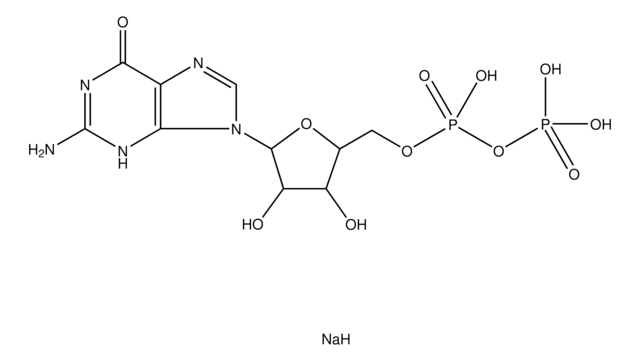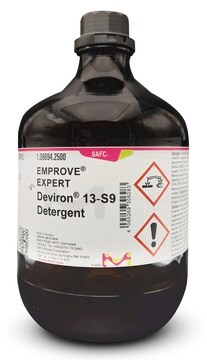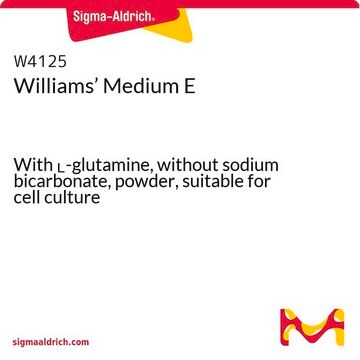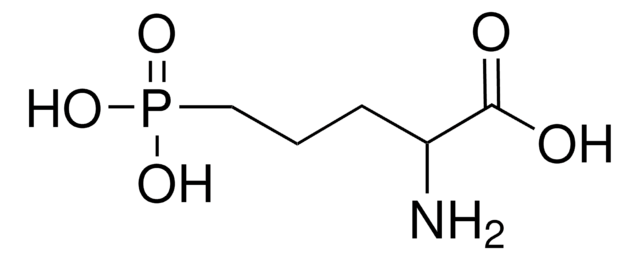A1420
Ames′ Medium
With L-glutamine, without sodium bicarbonate, powder, suitable for cell culture
Sign Into View Organizational & Contract Pricing
Select a Size
All Photos(1)
Select a Size
Change View
About This Item
UNSPSC Code:
41161501
NACRES:
NA.75
Recommended Products
Quality Level
form
powder
technique(s)
cell culture | mammalian: suitable
components
glucose: 1.081 g/L (Dextro)
NaHCO3: no
L-glutamine: 0.073 g/L
shipped in
ambient
storage temp.
2-8°C
General description
Ames′ Medium has been formulated to support retinal tissue in relatively short-term culture. It is suitable for maintaining central nervous system tissue in vitro.
Application
Ames′ Medium has been used to maintain rat/mice/macaque monkey eye for the isolation of retina.
Quantity
Formulated to contain 8.8 grams of powder per liter of medium.
Reconstitution
Supplement with 1.9 g/L sodium bicarbonate.
Storage Class
11 - Combustible Solids
wgk_germany
WGK 2
flash_point_f
Not applicable
flash_point_c
Not applicable
Choose from one of the most recent versions:
Certificates of Analysis (COA)
Lot/Batch Number
Don't see the Right Version?
If you require a particular version, you can look up a specific certificate by the Lot or Batch number.
Already Own This Product?
Find documentation for the products that you have recently purchased in the Document Library.
Customers Also Viewed
B Ameline et al.
Gene therapy, 24(11), 735-741 (2017-09-08)
Several preclinical studies have investigated the potential of algal channelrhodopsin and human melanopsin as optogenetic tools for vision restoration. In the present study, we assessed the potentially deleterious effects of long-term expression of these optogenes on the diseased retina in
John M Nagarah et al.
Frontiers in neuroscience, 9, 384-384 (2015-11-06)
Multielectrode arrays (MEAs) allow for acquisition of multisite electrophysiological activity with submillisecond temporal resolution from neural preparations. The signal to noise ratio from such arrays has recently been improved by substrate perforations that allow negative pressure to be applied to
Sabrina Asteriti et al.
Visual neuroscience, 34, E006-E006 (2017-10-03)
Rod-cone gap junctions mediate the so-called "secondary rod pathway", one of three routes that convey rod photoreceptor signals across the retina. Connexin 36 (Cx36) is expressed at these gap junctions, but an unidentified connexin protein also seems to be expressed.
Kasey Rose et al.
Molecular neurodegeneration, 12(1), 28-28 (2017-04-13)
Light exposure triggers movement of certain signaling proteins within the cellular compartments of the highly polarized rod photoreceptor cell. This redistribution of proteins between the inner and outer segment compartments affects the performance and physiology of the rod cell. In
Shijun Weng et al.
Journal of biological rhythms, 24(5), 391-402 (2009-09-17)
Intrinsically photosensitive retinal ganglion cells (ipRGCs) project to the suprachiasmatic nucleus (SCN) and are essential for normal photic entrainment of global circadian rhythms in physiology and behavior. The effect of light on the central clock is dependent on circadian phase
Protocols
Powdered media and salt mixtures are extremely hygroscopic and should be protected from atmospheric moisture.
Our team of scientists has experience in all areas of research including Life Science, Material Science, Chemical Synthesis, Chromatography, Analytical and many others.
Contact Technical Service











